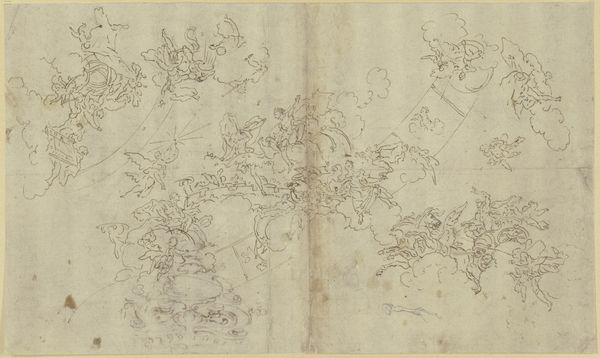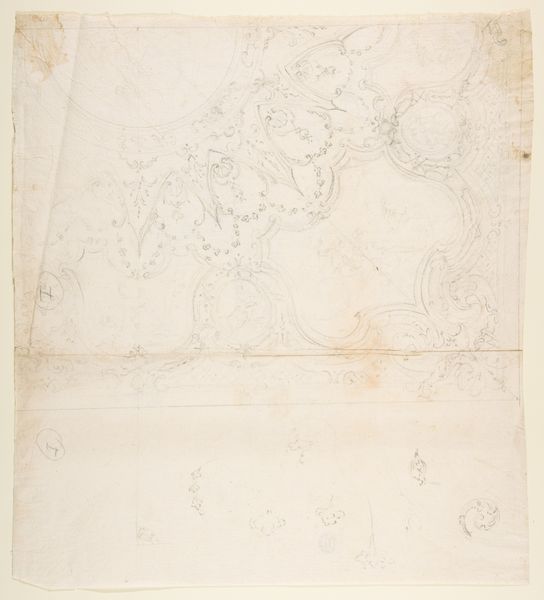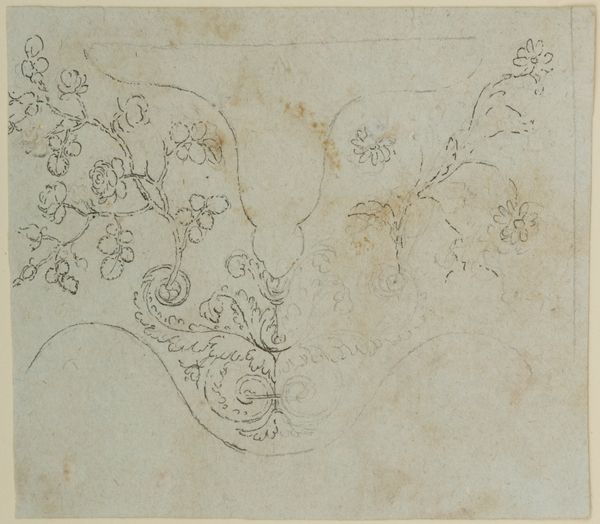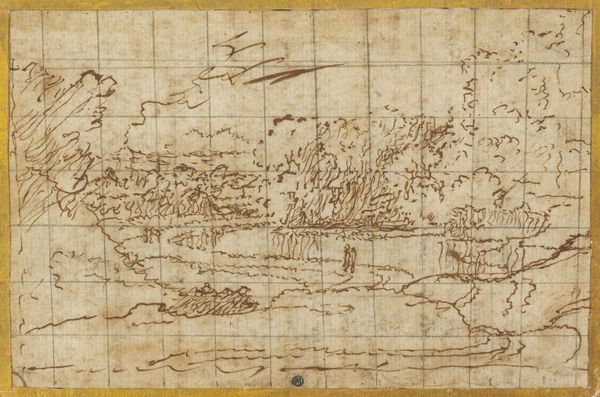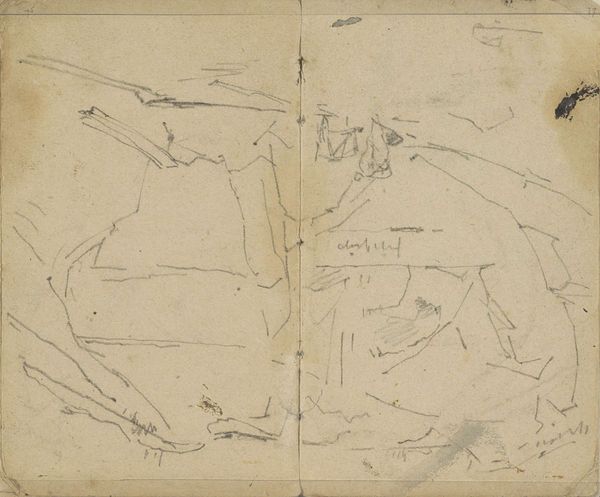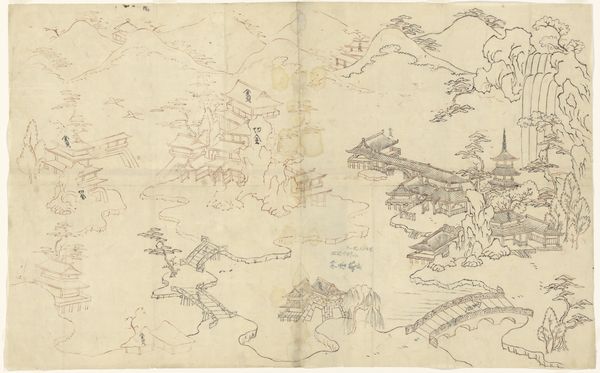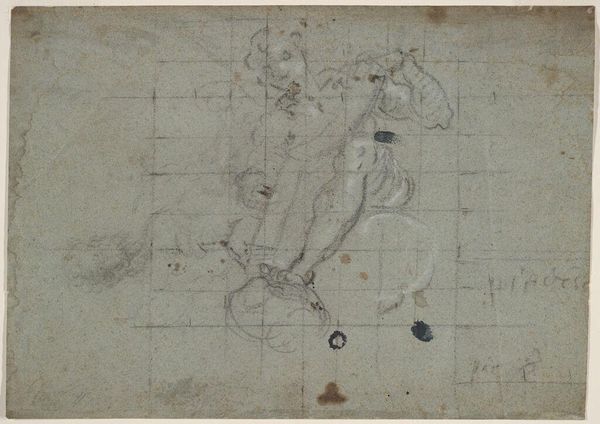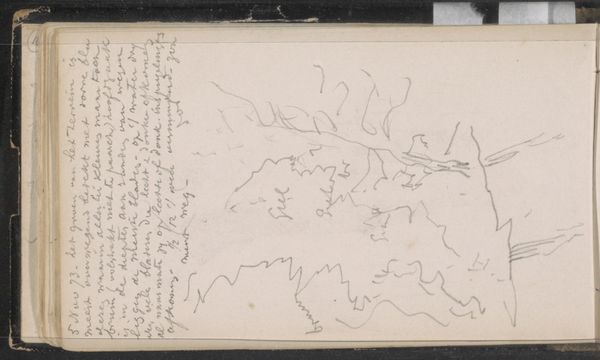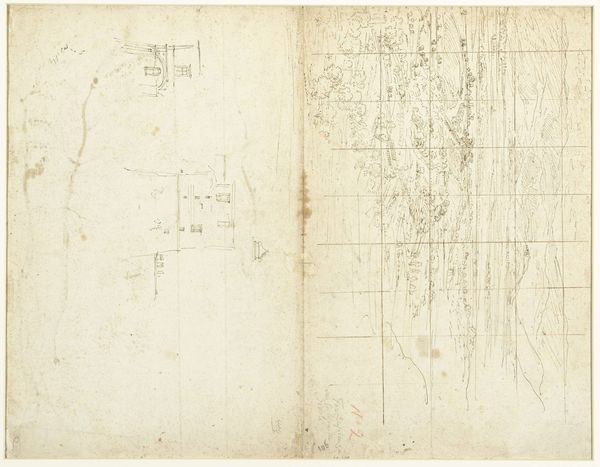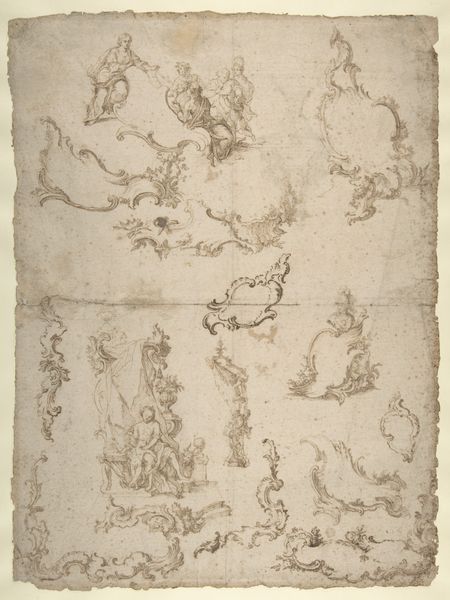
drawing, pencil
#
drawing
#
baroque
#
geometric
#
pencil
#
history-painting
#
academic-art
#
decorative-art
Dimensions: 16 x 23 3/4 in. (40.6 x 60.3 cm)
Copyright: Public Domain
Curator: Let's discuss this drawing, "Design for an Ornamental Frieze," an 18th-century work currently held at the Metropolitan Museum of Art. It is created using pencil. Editor: Oh, it looks like an architect's notebook doodle, you know? Something they were working on for that big commission! It feels unfinished, but in a beautiful way, like glimpsing a secret plan. Curator: Absolutely! These decorative art patterns in academic-art style tell us much about 18th-century tastes. You can trace Baroque elements within this design, full of symmetry and repeating geometric forms—patterns for artisans to replicate, perhaps on walls or furniture. Note the classical references in the human figures interspersed throughout. Editor: I love the potential energy! Like those squiggles could erupt into glorious excess any moment. Is it me, or does that vessel resemble a ship? A tiny sailing vessel sailing over a crown! Curator: Good observation! The inclusion of ships suggests power and trade, important visual elements used throughout the Baroque era. Friezes frequently celebrated patrons' ambitions via potent visual symbols. These figures create rhythm, guiding the eye, building expectation, and communicating status through symbolic language. Editor: So it is not really just random "architect notebook doodlings" but also, in some way, historical advertisements and visual articulations! And here I was just vibing with some eighteenth-century daydream! Still, knowing it had all this significance only deepens the image. Knowing the historical layers adds more mystery. Curator: The layers of meaning do enrich it! But I wouldn’t dismiss your "daydream" response! Visual motifs linger over centuries because those shapes resonate. Whether for unconscious or historical causes, such artwork still finds ways to appeal to viewers. Editor: That makes a lot of sense. Art, you're right, still works its strange magic on me centuries later! The more you look at that unassuming surface, the deeper into a history one goes. I suppose a conversation begins.
Comments
No comments
Be the first to comment and join the conversation on the ultimate creative platform.
